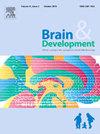A brief review of MRI studies in patients with attention-deficit/hyperactivity disorder and future perspectives
IF 1.4
4区 医学
Q4 CLINICAL NEUROLOGY
引用次数: 0
Abstract
Attention-deficit/hyperactivity disorder (ADHD) is a prevalent neurodevelopmental disorder characterized by persistent inattention, hyperactivity, and/or impulsivity that significantly affects academic, occupational, and social functioning. This review summarizes key findings of structural and functional magnetic resonance imaging (MRI) studies investigating the neural underpinnings of ADHD, focusing on T1-weighted structural MRI, diffusion tensor imaging (DTI), task-based functional MRI (task fMRI), and resting-state functional MRI (rs-fMRI). T1-weighted structural MRI studies have revealed reduced gray matter volume in regions implicated in executive function, particularly the frontal cortex, basal ganglia, and cerebellum, along with evidence of delayed cortical maturation. DTI findings highlighted abnormalities in white matter integrity, particularly in the fronto-striatal-cerebellar circuits and connections between the corpus callosum and cingulum. Task fMRI studies have demonstrated reduced activation of brain networks involved in cognitive control, timing, and reward processing, including fronto-striatal and fronto-parietal networks. Furthermore, rs-fMRI research has shown altered connectivity patterns within and between key brain networks, including the default mode, fronto-parietal, and salience networks. Despite these insights, inconsistencies across studies underscore the need for larger and more standardized research efforts. Future research should employ multimodal imaging techniques and advanced analytical methods such as machine learning to better subtype ADHD and customize interventions. Moreover, establishing harmonized imaging protocols across institutions, as exemplified by innovative strategies, such as the traveling-subject method, is crucial for mitigating intersite variability. Through collaborative efforts, neuroimaging studies in ADHD are anticipated to enhance our understanding of the disorder's heterogeneity while informing the development of precise clinical diagnoses and personalized therapeutic interventions.
求助全文
约1分钟内获得全文
求助全文
来源期刊

Brain & Development
医学-临床神经学
CiteScore
3.60
自引率
0.00%
发文量
153
审稿时长
50 days
期刊介绍:
Brain and Development (ISSN 0387-7604) is the Official Journal of the Japanese Society of Child Neurology, and is aimed to promote clinical child neurology and developmental neuroscience.
The journal is devoted to publishing Review Articles, Full Length Original Papers, Case Reports and Letters to the Editor in the field of Child Neurology and related sciences. Proceedings of meetings, and professional announcements will be published at the Editor''s discretion. Letters concerning articles published in Brain and Development and other relevant issues are also welcome.
 求助内容:
求助内容: 应助结果提醒方式:
应助结果提醒方式:


